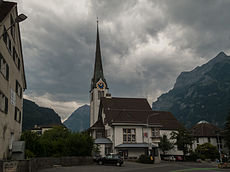
Glarus is the capital of the canton of Glarus in Switzerland. Since 1 January 2011, the municipality Glarus incorporates the former municipalities of Ennenda, Netstal and Riedern.

Ennenda is a former municipality in the canton of Glarus in Switzerland. Effective from 1 January 2011, Ennenda is part of the municipality of Glarus.

Haslen is a village, and former municipality, in the municipality of Glarus Süd and canton of Glarus in Switzerland.

Mitlödi is a village and former municipality, in the municipality of Glarus Süd and canton of Glarus in Switzerland.
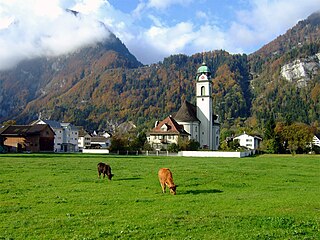
Näfels is a former municipality in the canton of Glarus in Switzerland. Effective from 1 January 2011, Näfels is part of the municipality of Glarus Nord.

Netstal is a former municipality in the canton of Glarus in Switzerland. Effective from 1 January 2011, Netstal is part of the municipality of Glarus.

Schwanden is a village, and former municipality, in the municipality of Glarus Süd and canton of Glarus in Switzerland.
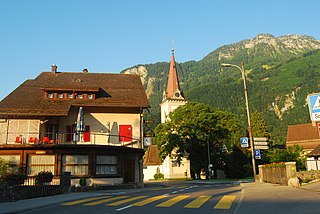
Niederurnen is a former municipality in the canton of Glarus in Switzerland. Effective from 1 January 2011, Niederurnen is part of the municipality of Glarus Nord.

Oberurnen is a former municipality in the canton of Glarus in Switzerland. Effective from 1 January 2011, Oberurnen is part of the municipality of Glarus Nord.

Nidfurn is a village, and former municipality, in the municipality of Glarus Süd and canton of Glarus in Switzerland.

Ziegelbrücke is a village situated on both sides of the Linth Channel in Switzerland. Ziegelbrücke is shared by the municipalities of Niederurnen in the canton of Glarus and Schänis in the canton of St. Gallen, with the Linth forming the boundary between these municipalities.

Glarus Nord is one of three municipalities of the canton of Glarus, Switzerland.

Ziegelbrücke railway station is a junction station in the village of Ziegelbrücke in Switzerland. Whilst the village is shared between the municipality of Glarus Nord, in the canton of Glarus, and the municipality of Schänis, in the canton of St. Gallen, the station is located in the Gemarkung of Schänis, where it is the larger of two railway stations.

Glarus railway station is a railway station in the municipality of Glarus in the Swiss canton of Glarus. It is an intermediate stop on the Ziegelbrücke–Linthal line.
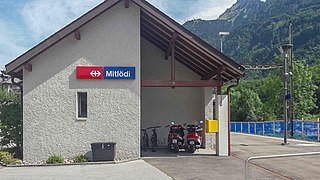
Mitlödi railway station is a railway station in the municipality of Glarus Süd in the Swiss canton of Glarus. It is an intermediate stop on the Weesen to Linthal railway line, and serves the village of Mitlödi.

Näfels-Mollis railway station is a railway station in the municipality of Glarus Nord in the Swiss canton of Glarus. It is an intermediate stop on the Weesen to Linthal railway line, and serves the twin villages of Näfels and Mollis.

Netstal railway station is a railway station in the municipality of Glarus in the Swiss canton of Glarus. It is an intermediate stop on the Weesen to Linthal railway line, and serves the village of Netstal.

The S25 is a regional railway line of the S-Bahn Zürich on the Zürcher Verkehrsverbund (ZVV), Zürich transportation network, and is one of the network's lines connecting the cantons of Zürich with Schwyz, Glarus and St. Gallen. The line was introduced in July 2014, and replaces the less frequent Glarner Sprinter train.
The Ziegelbrücke–Linthal railway, is a single-track standard-gauge line in Switzerland. It was opened in two stages and by two railway companies. The line from Weesen via Näfels-Mollis to Glarus was opened on 15 February 1859 by the United Swiss Railways. It was opened with the Rüti–Rapperswil–Weesen line. The line from Glarus via Schwanden to Linthal was opened on 1 June 1879 by the Swiss Northeastern Railway.
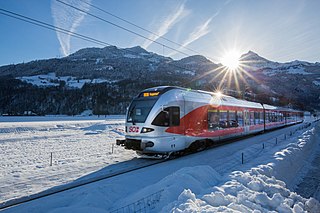
The S6 is a railway service of the St. Gallen S-Bahn that provides hourly service between Rapperswil and Schwanden, in the cantons of St. Gallen and Glarus. A limited number of trains continue from Schwanden to Linthal. Südostbahn, a private company primarily owned by the federal government and the canton of St. Gallen, operates the service.





